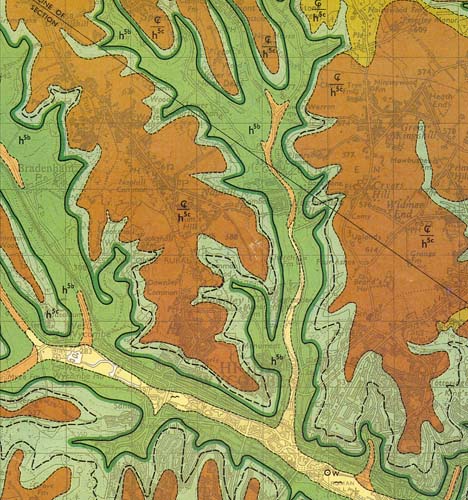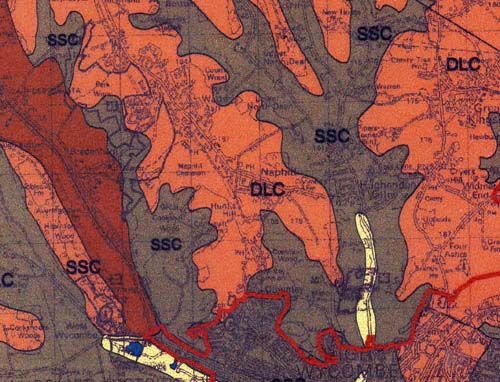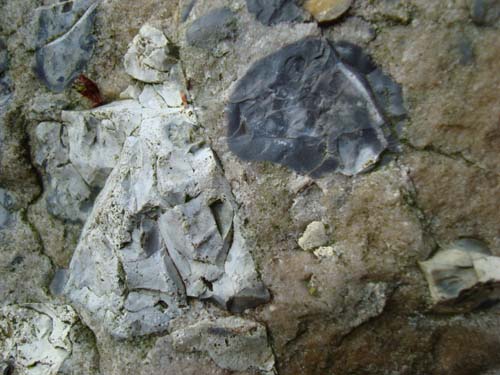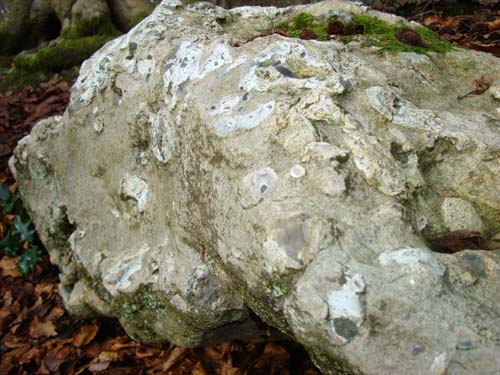Naphill Common - Geology
Naphill Common Geology and soil survey with feature evaluation by Jill Eyres
The Chiltern Hills are composed mainly of chalk formed in a sea, in the Cretaceous period (c65 -145 million years before present (myp)). This is overlaid with clay-with-flints deposited in the Pleistocene (c1.8-0.01 myp). The clay on the common is particularly impervious, which explains the muddy paths and perhaps why it became a common.
Towards the western (Bradenham) end of the common there are occasional sarsen and puddingstones. These are thought to be the remnants of an almost continuous layer of ‘silcrete’ formed under arid desert conditions in the Tertiary period (65myp to present) and broken up by the action of glaciers, probably the Anglian glaciation of 120,000 years ago (From Dr Jill Eyers 1998 Rocks Afoot: Geological Walks in Buckinghamshire.). Sarsen, known locally as ‘Denner Hill stone’, is an extremely hard sandstone, once the centre of a local industry.

Geology Map
Orange - C/h5c - Clay with flints over soft white chalk with many flints
Pale green - h5c - Soft white chalk with many flints
Dark green - Chalk rock
Green - h5b - Hard white chalk with few flints
Yellow - ~ - Alluvium

Part of The Chilterns AONB Soils Map
SSC - Shallow silt over chalk
DLC - Deep loam to clay
Puddingstone

Towards the western (Bradenham) end of the Common there are occasional sarsen and puddingstones. These are thought to be the remnants of an almost continuous layer of 'silcrete' formed under arid desert conditions in the Tertiary period (65myp to present) and broken up by the action of glaciers, probably the Anglian glaciation of 120,000 years ago (From Dr Jill Eyers 1998 Rocks Afoot: Geological Walks in Buckinghamshire.). Sarsen, known locally as 'Denner Hill stone', is an extremely hard sandstone, once the centre of a local industry.
Examples of Puddingstones at Willow Pond taken by Kevin Bennett


